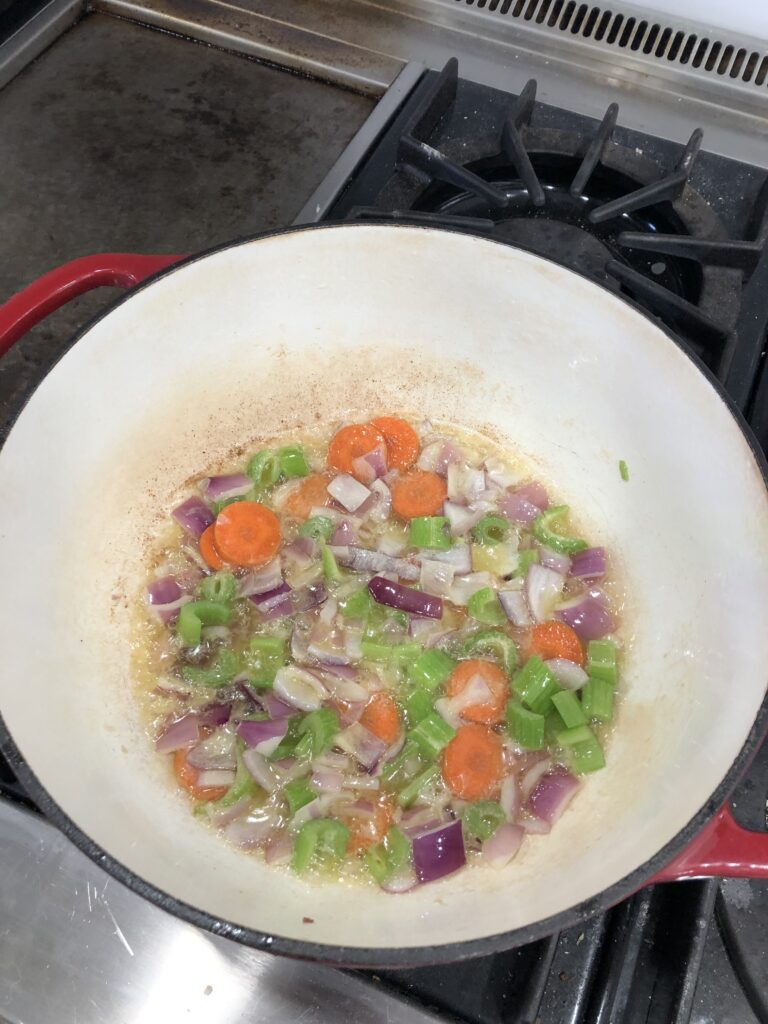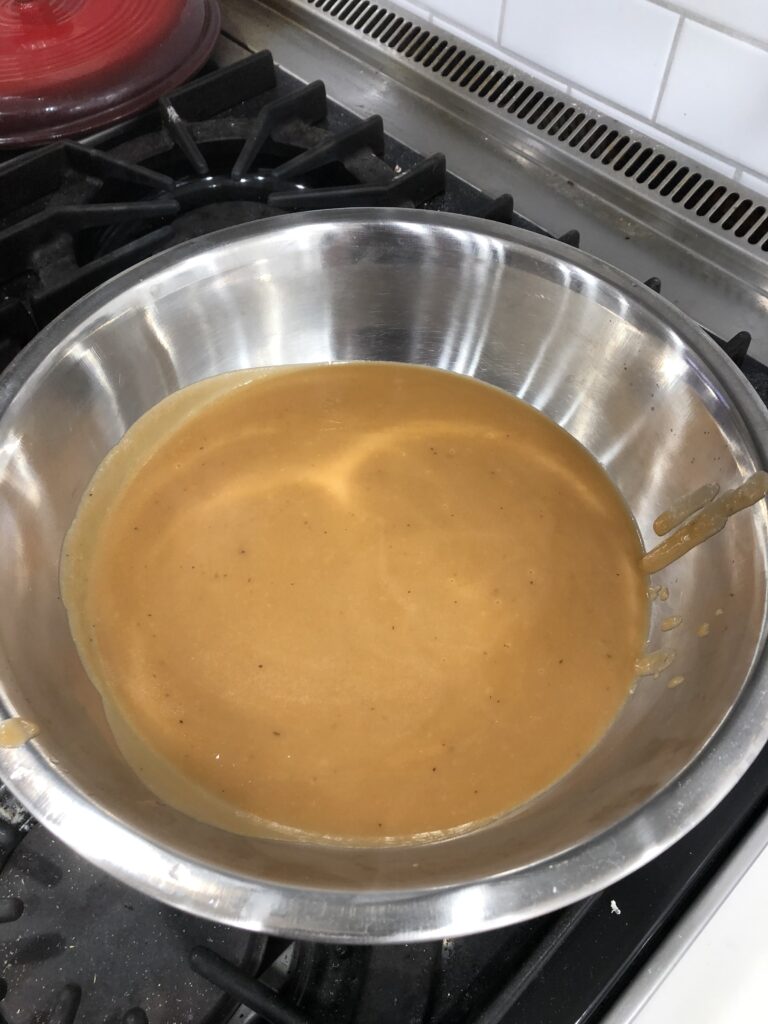Try one of the other five French Mother Sauces
Espagnole is a brown sauce and we will make both a classic and vegetarian version – because we all know someone into food drama. Espagnole is a rich brown sauce and like Béchamel was the base for Mornay sauce, Espagnole will be the base for Demi-Glace. While it is consider one of the French mother sauces, as the name intimates, this is a sauce that originated in Spain. Traditionally Espagnole is made from veal, but in the interest of being politically correct, our recipe will use beef stock. You can use chicken stock, but why?
This sauce can be time consuming and involves the use of a bouquet garni, which is a bundle of herbs usually tied in a cheesecloth but can be just tied together with a string. Some Chefs will use a mirepoix instead, but then you have to strain. You’ll end up straining all the vegetables out anyway, so it doesn’t matter if you use a bouquet garni or a mirepoix.

If you do much French cooking, you’re already used to using bouquet garni and mirepoix in everything from sauces to soups to sautés to braises. Now that I’ve peaked your interest, the difference between a bouguet garni and mirepoix, other than bundling and that they’ll ultimately be discarded, is the aromatics used. A bouquet garni is comprised of herbs and always has parsley, thyme, and bay leaf. You can of course use other aromatics. A mirepoix is a mixture of aromatic vegetables including onions, carrots, and celery stalks. Sometimes leeks are used instead of celery if you’re after a sweeter contribution.
For classic (nonvegetarian) Espagnole, the ingredient list is
- 4 TBL butter
- 4 TBL flour
- 4 oz onions – chopped
- 2 oz carrots – chopped (no need to peel)
- 2 oz celery – chopped
- 2 oz tomato puree
- 48 oz veal stock (or beef stock if you’re neither French or Spanish)
- 1 bay leaf
- 1 sprig thyme (or 1/4 tsp of dry thyme)
- 3 parsley stems (that’s where all the flavor is)
- Salt and pepper to taste
The process for making Espagnole is
- Melt the butter: On medium heat, melt butter in a medium sauce pan. I like to use an enamel lined cast iron pot. It provides the best heat distribution and is great for the simmering stage later on.
- Sauté the mirepoix: Add the onion, celery, and carrots to the melted butter and sauté until deeply caramelized, about 20 mins. You will need to occasionally stir to prevent the butter from burning.
- Make the roux: Reduce the heat and add flour. Stir until the flour coats the mirepoix and reaches the desired color. At this point, the butter itself will have browned. Your roux will be very pasty, but don’t worry, it will get worse before it gets better.
- Stir in purée: As you add the tomato purée, the roux will thicken even more. That’s okay, relief is just around the corner. Stir the purée until the mirepoix is coated. At this point, your mirepoix is covered with butter that’s coated with flour that’s topped with tomato purée and we are almost past the difficult stage.
- Add Stock: is for a chicken based sauce, lightly toast the flour. If the roux is for a beef based sauce let the roux toast to a darker tone thus releasing more of the flour’s nutting potential. Either way, be careful not to overcook the roux or it will ruin your sauce. You’ll know the roux is ready when it achieves a smooth silkiness and has the desired color.
- Add the stock: Okay, here’s where we go off script. You want to use beef stock, however I was out of beef stock and had no intention of going to the COVID infected store so used chicken stock. Everyone whose French can now sigh with derision. In my defense, the store’s been out of beef for awhile now and I intend to serve this sauce with chicken. What can say, these are trying times. So, back to the stock, add it slowly and once in, bring sauce to a boil.
- Boil the sauce: Boil the sauce for ten minutes. Then add the thyme, parsley and bay leaf.
- Simmer the sauce: Simmer for 90 minutes, skimming the fat off the surface. Try not to stir as the fat will form a skin on the surface.
- Strain: Once the sauce is done simmering, strain out all the solids and discard. While it’s hard to throw away good vegetables, trust me, by now you’ve extracted everything of value from them.
- Refrigerate or serve: If you made this sauce in advance, you can refrigerate. Once cool, you can separate any remaining fat. To reheat, remove from frig an hour before use to let it warm. Then, very slowly heat on low.

Note: have you noticed that all the sauces use a ratio of butter to flour of 1:1? Keep this in mind as you scale up recipes and as you venture into other roux based cuisines, such as gumbo. The ratio of flour to butter in French roux is always 1:1.
I used the Espagnole sauce with chicken that was sous vide and then broiled. For plating I made Israeli couscous. I wanted to try them because they looked like little pearls, which I thought was cool. I also made fresh broccoli.

